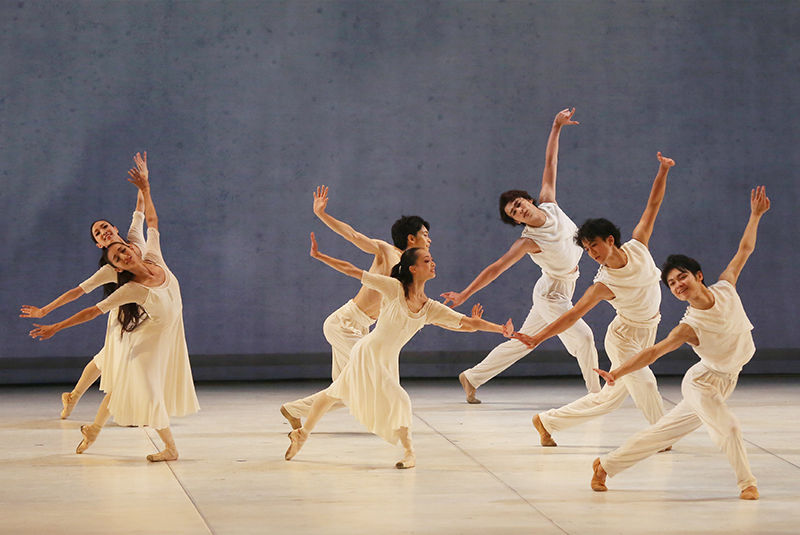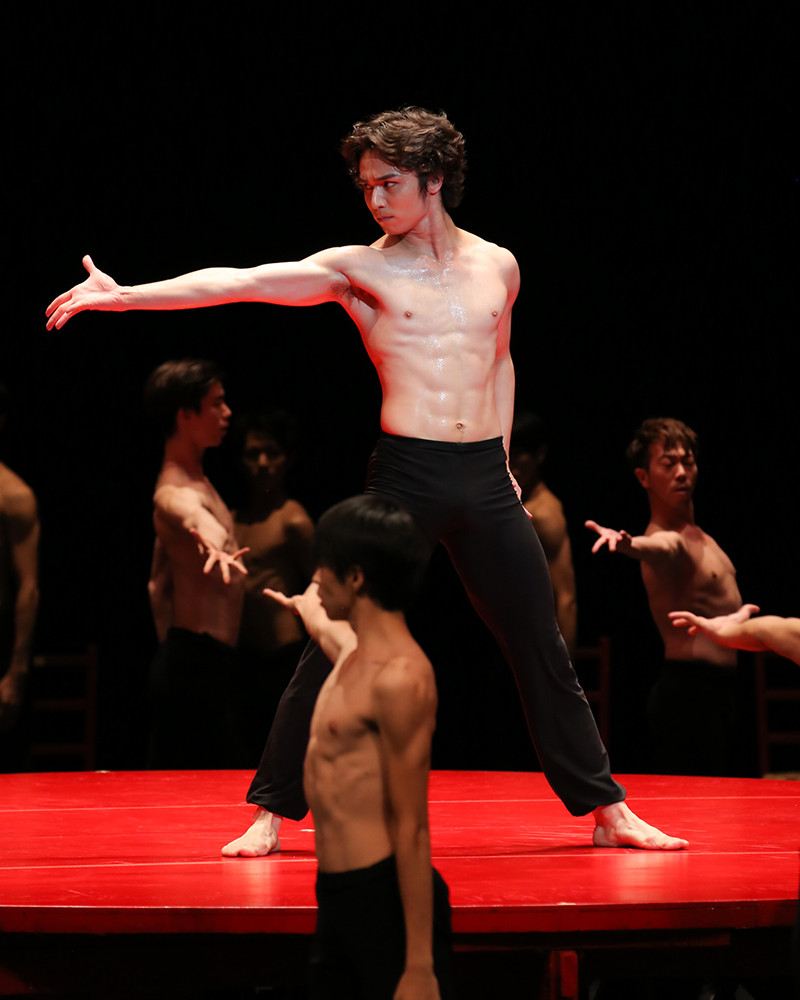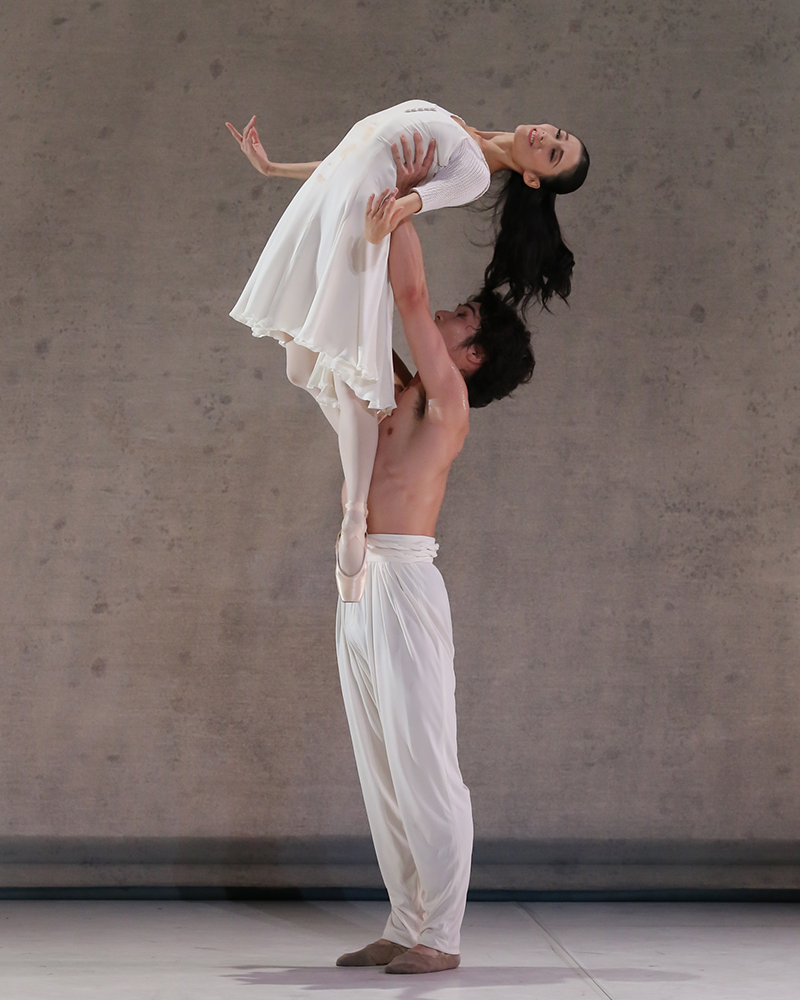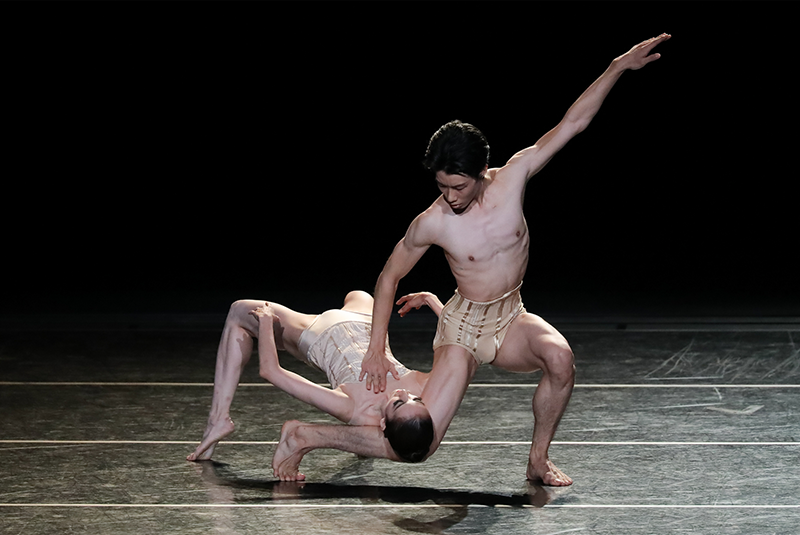
Photo: Kiyonori Hasegawa
Artistic Director Yukari Saito has chosen four masterpieces by four great masters, Jerome Robbins, Maurice Béjart, John Neumeier and Jiří Kylián, for The Tokyo Ballet's second performance series of 'Masterpieces of the 20th Century'.
Among Japanese ballet companies, The Tokyo Ballet is the only one whose repertoire includes In the Night, Boléro and Spring and Fall. Join us to savour the beautiful masterpieces.
In the Night
Choreography Jerome Robbins
Music Frédéric Chopin

Three contrasting sets of lovers dance a series of pas de deux to the music of Chopin.
Jerome Robbins, best known for his work on West Side Story, is arguably one the greatest American-born choreographers in the 20th century. His ballets are marked by elements of American cheerfulness combined with his stylishness and sensitive musicality.
In the Night is a romantic, lyrical ballet created by Robins in exploration into his fascination with Chopin's piano music. Under starlight, three couples dressed in elegant costumes dance to four nocturnes of Chopin to portray different shades of relationships. The Tokyo Ballet premiered the work in 2017 to critical acclaim.
Boléro
Choreography Maurice Béjart
Music Maurice Ravel

Ritual of sacred body, in female and male versions
Boléro by Maurice Bejart is devoid of any decorative elements. The lone "Melody" dances on the round red stage. The troop of "Rhythm" is drawn by the Melody's charisma. They all together boldly represent the music of Ravel. Since its premiere in 1961, the ballet's simplicity has continued to allow the dancers to transform the ballet itself between the sacred and the profane; it could be a 'story of desires' of men seduced by the goddess, or it could be a 'pagan rite'.
At its premiere, Melody was danced by a female dancer and Rhythm was danced by male dancers. Later, there was a version with a male dancer as Melody and female dancers as Rhythm. Then another version came with both Melody and Rhythm danced by male dancers.
"Music that is too well-known and yet still fresh due to its simplicity. A melody (originally oriental and not Spanish) that winds slowly around itself, increasing in volume and intensity, devours the sound space and swallows it up at the end of the melody."
Maurice Béjart
Spring and Fall
Choreography John Neumeier
Music Antonín Dvořák

Lyricism and vibrant beauty of life woven with Dvořák's Serenade for strings
John Neumeier's Spring and Fall set to plaintive melody of Dvořák's Serenade for Strings, is danced by seven female dancers and ten male dancers to weave a world with mellow lyricism and youthful vividness. While Neumeier was working with music of Dvořák, the words 'spring and fall' suddenly came to his mind. Then he remembered that one of the poems by English poet Gerard Hopkins had the same title. Neumeier decided to borrow the title. Like the poet expresses profounder world than each word literally means, Neumeier portrays a metaphysical world of 'Spring and Fall'. In the ballet, you will savour the various facets of life, such as joy, sweetness and sorrow.
Petite mort
Choreography Jiří Kylián
Music Wolfgang Amadeus Mozart

Heartbreakingly fine magic with movement
Jiří Kylián created Petite mort for the 1991 Salzburg Festival to commemorate the bicentennial anniversary of Mozart's death. Kylián set his work to two of Mozart's most popular piano concertos, No. 23 and 21. He chose the beautiful second movements. "This deliberate choice should not be seen as a provocation or thoughtlessness, rather as my way to acknowledging the fact that I am living and working as part of a world where nothing is sacred, where brutality and arbitrariness are common places. It should convey the idea of two antique torsos, heads and limbs cut off - evidence of intended mutilation - without being able to destroy their beauty reflecting the spiritual power of their creator."
The choreography includes six men, six women and six fencing foils. The foils are, in many ways, the men's real dancing partners and, at times, seem more unruly and obstinate than a partner of flesh and blood. They visualize a symbolism that is more present than a storyline. Aggression, sexuality, energy, silence, senselessness and vulnerability - they all play a significant part. Petite Mort, literally meaning "small death", also serves as a paraphrase for "orgasm" in French and Arabic.
Photos: Kiyonori Hasegawa
*In the Night will be accompanied by live piano. Boléro, Spring and Fall, and Petite mort will be accompanied by recorded music.